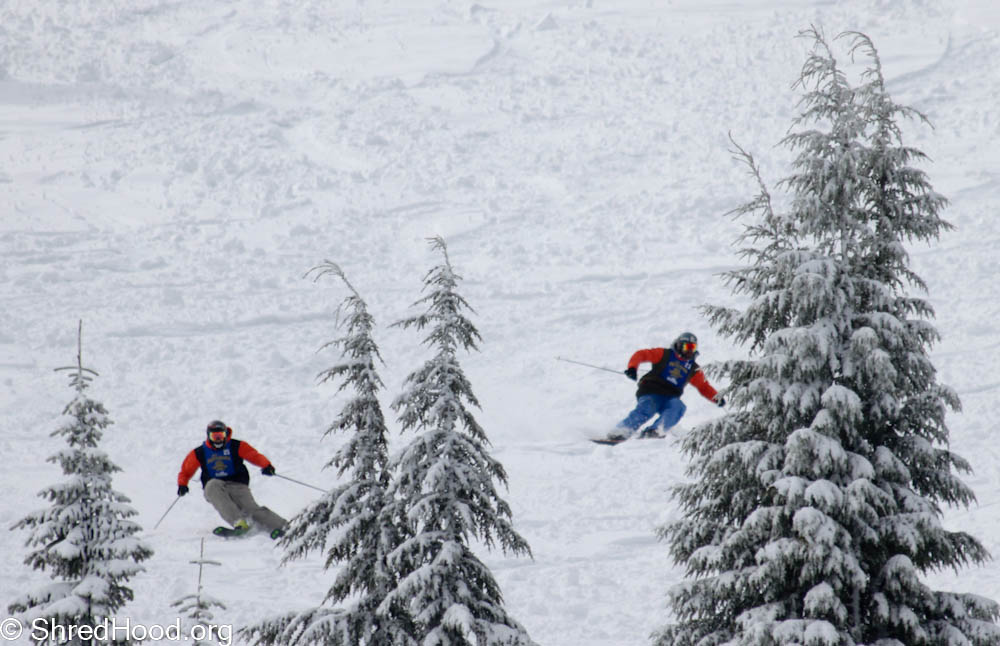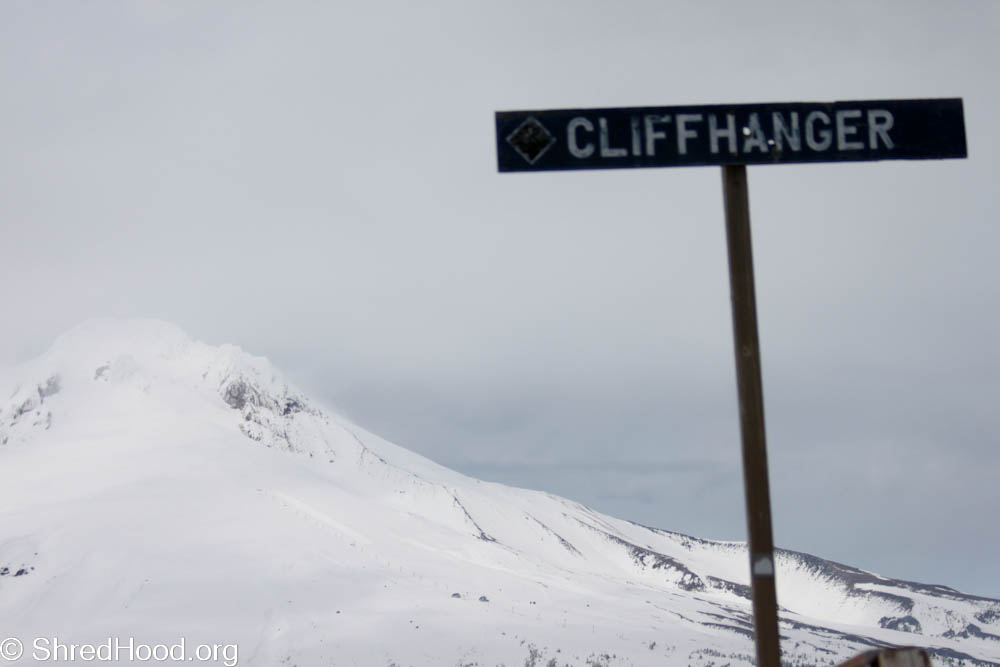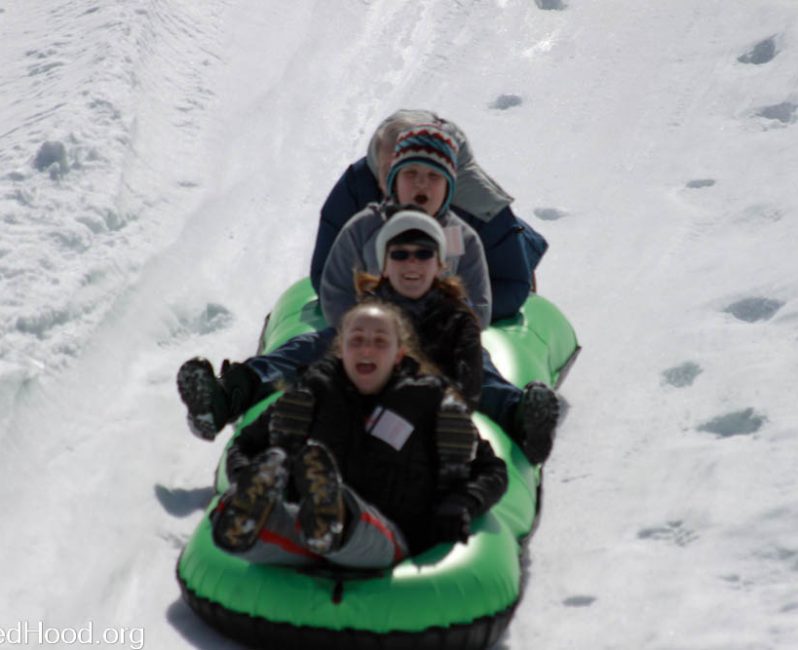Mt. Hood Skibowl has some of the best runs on the mountain – when there is snow.
The problem with Skibowl, however, is that the snow does not always cooperate. Some years there is snow, other years rain and more rain. A few hundred feet of elevation can make all the difference in the Pacific Northwest, and Skibowl’s lower elevation compared to Timberline and Mt. Hood Meadows makes its snow seasons highly variable and unreliable, ranging from amazing (2016-17) to non-existent (2014-15). The resort has adapted by investing in mountain biking and other summer adventures and building a popular tubing hill at Multorpor that is much easier to operate with low snow than a ski area. The tubing hill will never replace a real ski experience in my view, but I have to admit it can be a hill of fun:
The latest adaptation to a changing climate comes in the form of a $750,000 snowmaking machine that produces snow even when the temperature is above freezing. Whereas traditional snow-makers have simply shoot water into freezing air to produce snow, a new generation of snow-makers is growing in popularity as ski resorts from Oregon to Switzerland to Australia to Chile grapple with the no-longer-theoretical reality of diminishing snow levels in an age of accelerating climate change. Firms such as Italy’s TechnoAlpin and Israel’s IDE are promoting “snow factories” to serve a new market estimated to be worth $1 billion annually, and rising in sync with global temperatures.
These new snow-makers use refrigeration systems of varying degrees of sophistication to freeze water before shooting it out onto the slope. They can create snow in any temperature, although obviously the snow won’t last long if the temperature is above freezing. The result isn’t exactly powder – more like slush, but it is better than nothing on a ski trail, and good enough for a tubing hill. Manufacturers recommend that these snow factories be used on low-slope, low-erosion areas of the resort, so the snow will last longer.
According to Skibowl, the new snow-maker can produce about 12 dump truck loads of snow over 24 hours. At this point the resort is using it only for the tubing hill. Time will tell whether Skibowl is willing to invest in more machines to salvage ski operations in low-snow years. The resort has managed to survive without making upgrades its competitors made decades ago, such as high-speed quads. They deserve credit for taking a chance on the high-temp snow-maker. If the experiment works, perhaps we will eventually see more openings on the Skibowl ski terrain as well.
Still, for the real Skibowl experience that so many know and love, we will always need a little love from Mother Nature:


Last modified: December 7, 2018


